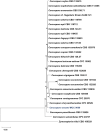Genome sequencing and annotation of Cercospora sesami, a fungal pathogen causing leaf spot to Sesamum indicum
- PMID: 36685323
- PMCID: PMC9852405
- DOI: 10.1007/s13205-023-03468-4
Genome sequencing and annotation of Cercospora sesami, a fungal pathogen causing leaf spot to Sesamum indicum
Abstract
Cercospora sesami is a plant pathogen that causes leaf spot disease in sesame plants worldwide. In this study, genome sequence assembly of C. sesami isolate Cers 52-10 (MCC 9069) was generated using native paired-end and mate-pair DNA sequencing based on the Illumina HiSeq 2500 platform. The genome assembly of C. sesami is 34.3 Mb in size with an N50 of 26,222 bp and an average GC content of 53.02%. A total number of 10,872 genes were predicted in this study, out of which 9,712 genes were functionally annotated. Genes assigned to carbohydrate-active enzyme classes were also identified during the study. A total of 80 putative effector candidates were predicted and functionally annotated. The C. sesami genome sequence is available at DDBJ/ENA/GenBank, and other associated information is submitted to Mendeley's data.
Supplementary information: The online version contains supplementary material available at 10.1007/s13205-023-03468-4.
Keywords: Cercospora leaf spot; Effectors; Gene annotation; Genome assembly; Plant pathogens; Sesame.
© King Abdulaziz City for Science and Technology 2023, Springer Nature or its licensor (e.g. a society or other partner) holds exclusive rights to this article under a publishing agreement with the author(s) or other rightsholder(s); author self-archiving of the accepted manuscript version of this article is solely governed by the terms of such publishing agreement and applicable law.
Conflict of interest statement
Conflict of interestThe authors declare that they have no conflict of interest in the publication.
Figures




Similar articles
-
Draft genome sequence data of Cercospora kikuchii, a causal agent of Cercospora leaf blight and purple seed stain of soybeans.Data Brief. 2019 Oct 21;27:104693. doi: 10.1016/j.dib.2019.104693. eCollection 2019 Dec. Data Brief. 2019. PMID: 31720340 Free PMC article.
-
Complete Genome Sequence Resource for Cercospora apii Causing Leaf Spot of Celery.Mol Plant Microbe Interact. 2023 Oct;36(10):670-673. doi: 10.1094/MPMI-04-23-0039-A. Epub 2023 Oct 18. Mol Plant Microbe Interact. 2023. PMID: 37156750
-
High-quality genome assembly of the soybean fungal pathogen Cercospora kikuchii.G3 (Bethesda). 2021 Sep 27;11(10):jkab277. doi: 10.1093/g3journal/jkab277. G3 (Bethesda). 2021. PMID: 34568928 Free PMC article.
-
Genome Sequencing of Leishmania infantum Causing Cutaneous Leishmaniosis from a Turkish Isolate with Next-Generation Sequencing Technology.Acta Parasitol. 2021 Mar;66(1):75-80. doi: 10.1007/s11686-020-00252-9. Epub 2020 Jul 20. Acta Parasitol. 2021. PMID: 32691361 Review.
-
Cercospora leaf spot disease of sugar beet.Plant Signal Behav. 2023 Dec 31;18(1):2214765. doi: 10.1080/15592324.2023.2214765. Plant Signal Behav. 2023. PMID: 37209061 Free PMC article. Review.
Cited by
-
Microbes on the "peachy spots" of ancient Kaihua paper: microbial community and functional analysis.Front Microbiol. 2024 Jan 11;14:1326835. doi: 10.3389/fmicb.2023.1326835. eCollection 2023. Front Microbiol. 2024. PMID: 38274746 Free PMC article.
References
-
- Alice D, Nadarajan N (2007) Pulses: screening techniques and assessment for disease resistance. All India coordinated research project on MULLaRP.
-
- Andrews S (2010) FastQC: a quality control tool for high throughput sequence data.
-
- Anilakumar KR, Pal A, Khanum F, Bawa AS. Nutritional, medicinal and industrial uses of sesame (Sesamum indicum L.) seeds - an overview. Agric Conspec Sci. 2010;75:159–168.
LinkOut - more resources
Full Text Sources
Miscellaneous

